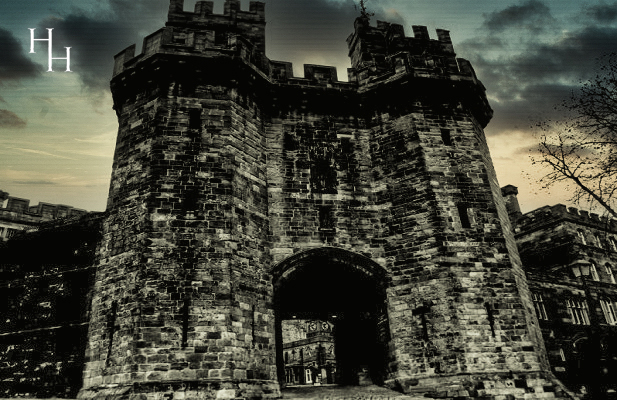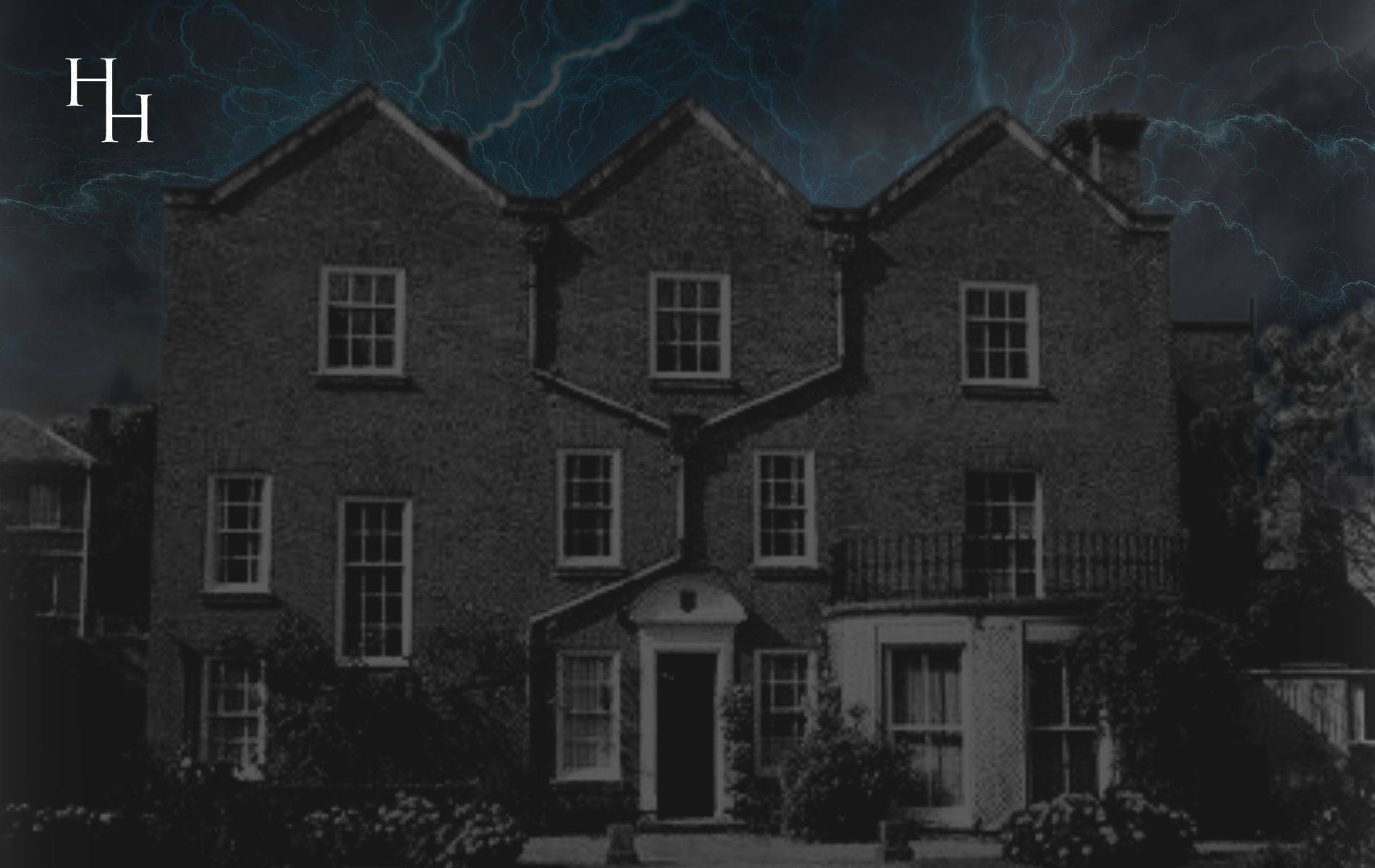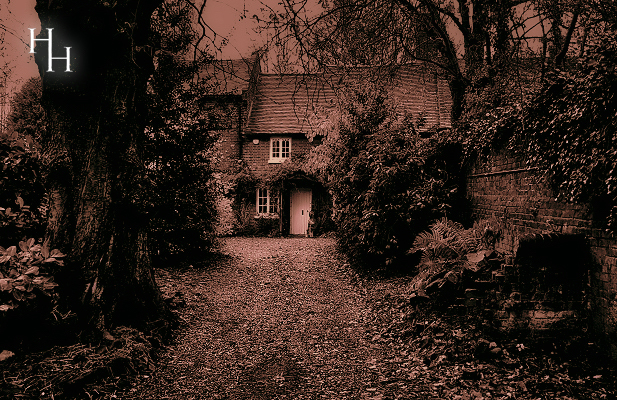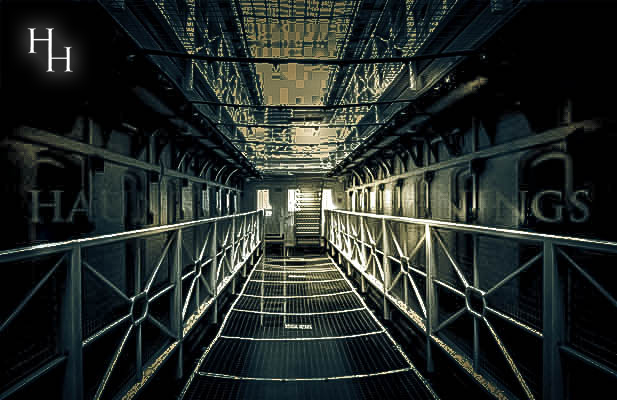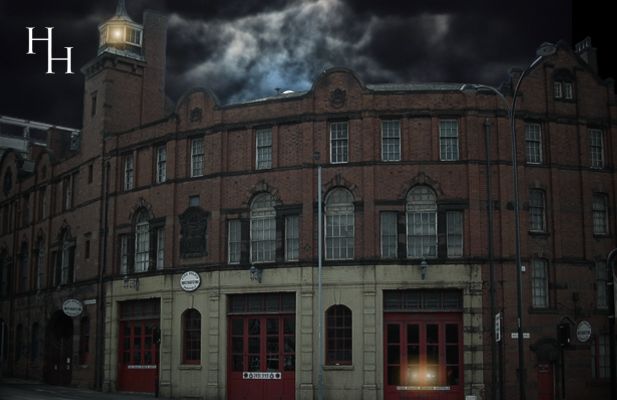Lancaster Castle - Lancaster, Lancashire
A building with a dark and tragic history and executions by hanging took place here until 1865
Sorry, we do not have any events for this location at the moment. Please keep an eye on our website for future dates.
Lancaster Castle - The Final Chapter. This is where the story of the Pendle Witches meets its grissly end. Lancaster Castle was the final destination place for these wretched women. Prior to being hanged for witchcraft they were incarcerated in a dark, gloomy cell known as the Well Tower and shackled to the floor. One of the witches, poor Demdyke, met her death here whilst awaiting trial unable to withstand the barbaric conditions. Used as a prison since 1196, this building has a dark and tragic history and executions by hanging took place here until 1865. The Well Tower is a place where we investigate but we are mindful of the intense suffering endured here. Join us for an overnight ghost hunt at the haunted Lancaster Castle. This is a spooky place by day and a terrifying place by night.
Ghosts of Lancaster Castle
The ghosts of Lancaster Castle are many. With over 1,000 years of macabre history, you never know who you will encounter.
Tour guides have heard hushed whispers and the sound of footsteps in the Courtroom. While locking up one night, one of them became aware of something by her side. She heard a high-pitched sound for which there seemed no source. Blue orbs have been seen with the naked eye in the cell where the Pendle Witches were held before their trial. Crying was also heard from the Barrister's Library - again empty!
On Monday 28 January 2013, security footage captured a shadowy figure walking inside the gatehouse entrance. Daytime visitors often report being pushed and staff have come to accept this as a common event. Nobody has been hurt, but maybe the ghosts of Lancaster Castle are putting their stamp on this old building. With more than 200 prisoners executed on this site, it is no wonder so much paranormal activity is experienced here.
The Black Monk of Lancaster Castle
Legend talks of a monk who haunts the prison grounds. He is believed to have been hanged at the prison and is usually seen at ground level of the castle. His presence is often followed by an icy-chill and has so far only been witnessed at night.
The Haggard Woman & Child
Past inmates and prison officers have seen the apparition of a young girl. Her appearance is usually accompanied by another woman, sometimes middle-aged and sometimes old and haggard. Many times the girl has been heard running along the corridors of the prison, which was occupied until 2011.
Old Demdyke (The Pendle Witch)
During the 1612 trials of the Pendle Witch Trials, Old Demdyke died in one of the cells. Her spirit is believed to be responsible for much of the ghostly activity in the old cell within the Well Tower.
History of Lancaster Castle
This dark history of Lancaster Castle is long and harsh. It dates back to Roman times where it stood against the ancient Picts and Scots tribes. Owned by the Duchy of Lancaster (The Queen), the castle has survived many invasions. The Lancashire Witch Trials were held here in 1612, including the notorious Pendle Witches. More than 265 public hangings took place from 1762 - 1865, for anything from murder to cattle theft. Until 2011, it was a Category C Prison and German prisoners were held here during the First World War.
The Pendle Witches
The Pendle Witch Trials were held at Lancaster Castle in 1612. The 12 accused lived in the area around Pendle Hill and were charged with 10 murders by witchcraft. All but two were tried at the Lancaster Assizes on 18th-19th August, along with the Samlesbury Witches. The trials became known as the Lancashire Witch Trials. Nine women and two men were found guilty and hanged. Old Demdyke died in her prison cell in the Well Tower at Lancaster Castle before the trial began. In 1996, a petition was sent to the UK Home Secretary asking that the witches be pardoned, but was refused.
Early History of Lancaster Castle
Little is known of the period between the Romans and the Norman Conquest of the late 11th Century. It is thought the Castle was first built around 1090, possibly by Roger de Poitou. He fled the country after a failed rising against the new king, Henry I. The castle eventually passed to Richard the Lionheart and his brother, Prince John.
One of the castle's earliest uses was as a prison, first recorded in 1196. This became a main function of Lancaster Castle during the English Civil War of 1642 - 1651. Royalist soldiers failed in their attempt to gain control and were imprisoned here. During the late 12th and early 13th centuries, the original timber castle was replaced with stone. The castle was again made stronger before for the Spanish Invasion. After Elizabeth I was excommunicated in 1570, she declared all Roman Catholics guilty of treason. Any living within the area were taken to Lancaster Castle for trial.
Civil War at Lancaster Castle
A small Parliamentarian force captured the castle in February 1643, and protected the area around the town. Royalist soldiers sent an army to re-take Lancaster and the outer defences fell in March. A siege of the castle lasted two days and Royalists failed to recapture Lancaster again in April. The town and castle remained under Parliament's control until the end of the war. King Charles was executed in January 1649 and Parliament ordered the slighting of the castle. Buildings used for admin and the county gaol were left. The monarchy was restored in 1660, and Charles II visited Lancaster on 12 August to release all the prisoners held in the castle.
Lancaster Castle has served as a county gaol, a debtor's prison and a category C modern prison. The prison reformer John Howard visited in 1776 and noted the dirty conditions. Improvements were made to sanitation around this time. More prisoners died from gaol fever in the 18th century than from hanging. Public executions were moved indoors in 1868 and the last took place in 1910. The prison closed in 1916 but was used again during WWI to hold German soldiers.
Between 1931 and 1937, the council used the building to train police officers. It re-opened as a prison in 1955 and remained in full use until 2011 because it was outdated and costly.
Lancaster Castle Today
This historic building is now open to the public for daytime tours and overnight ghost hunts, allowing people to experience the horrors of a genuine Norman Castle and walk in the footsteps of the Pendle Witches.




